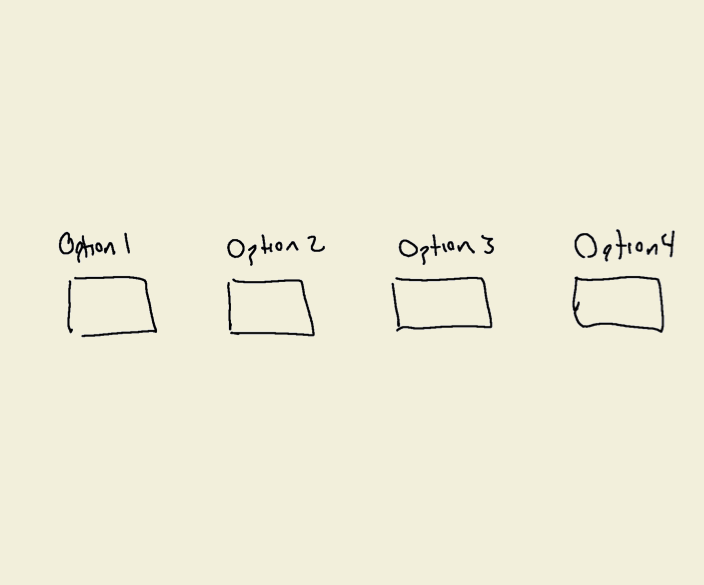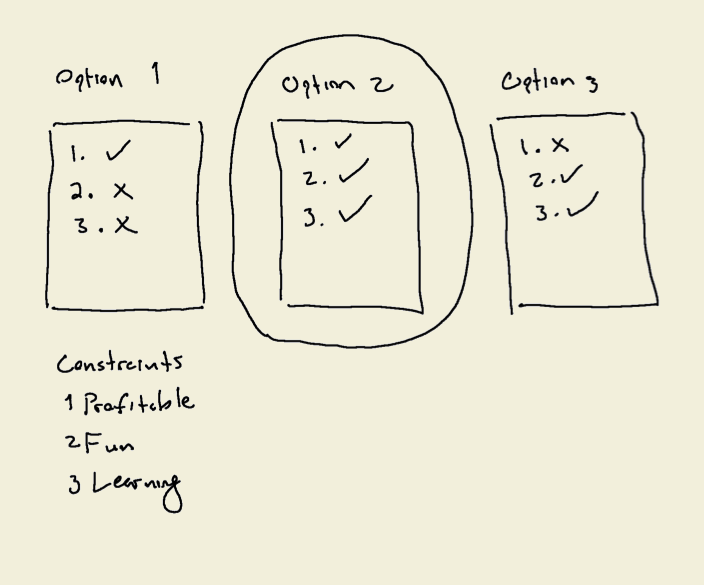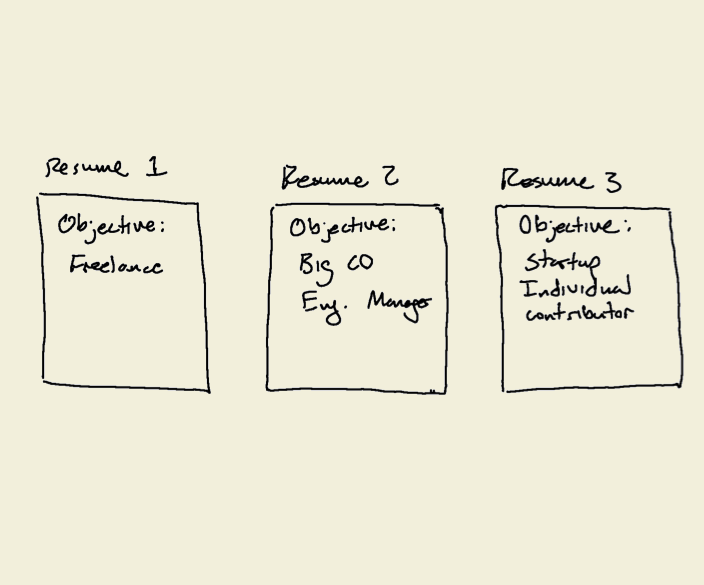
How to make Decisions and Escape Analysis Paralysis
I met with a friend who was in a lot of emotional pain today.
She’s freelancing but it’s unstable and she might need to go full-time soon. But if she goes full-time she’s not sure what kind of job she’d want. Basically she can’t decide and she’s stuck, and it sucks.
I’ve struggled with this decision paralysis problem in my entrepreneurship in the past — maybe I should build a fitness app business, or something with AI, or something for video producers…
Not being able to make a choice is one of the most painful parts of my work.
Over time I’ve come up with 3 ideas that help A LOT in making better, faster decisions.
In this blog post, I’ll describe these 3 ideas and then explain how we used these ideas to help my friend.
Idea 1 - You should consider many alternatives not just 1 thing…
I got this idea from Chip and Dan Heath’s book Decisive and it literally changed how I approach tough problems.
Often times when people are trying to make decisions they make the decision an either-or choice — “Should I do this or not”.
It’s better to come up with multiple alternative paths (thing 1, thing 2, thing 3, …) and then compare and contrast to choose the best one.
When you come up with multiple options you don’t get stuck. This is because you can focus on coming up with ideas without worrying if you have the “right” idea and it’s way easier to spot a great idea when you have a bunch of other less good ideas to compare it with.

Idea 2 - Constraints make choosing stuff WAY easier
It’s reall hard to choose a course of action without some constraints.
For example, if I told you to build a successful product should you build a course, or a robot or a solution to global warming?
There’s not enough structure for a mind to make a logical, confident decision.
Now let’s say instead that I tell you the following (add constraints).
- You’re an illustrator and you like doing illustrations
- You need to ship a product tomorrow
- You have a publisher friend who thinks you are incredible and can help you put your creation in front of customers on Amazon
- You like children
Well I think it’s pretty obvious that you should make an illustrated children’s book.
Constraints help you get around the blank-canvas problem so take the decision you’re struggling with.
Next time you’re struggling with a tough decision add some constraints and see if it helps you decide.

Idea #3 sometimes you need to decide which constraint is most important and ignore the rest
Sometimes you can face constraint overload. One idea seems fun but might take forever, another idea could make a lot of money but you wouldn’t learn anything new and it seems boring.
In situations like this you need to decide which constraint is MOST IMPORTANT.
Without making this decision you can’t decide —> “this idea is more profitable, but that idea is more fun”.
But if you decide which constraint is MOST important you can decide —> ”
“I decided on this course of action because it seems like it would be fun, I’ll learn a lot and we can launch it SUPER QUICKLY even though it has a high chance of failing”.
A practical example of how to apply these ideas to help my friend
Let’s get back to my friend from the intro.
She’s trying to decide whether or not to continue freelancing (keep freelancing or get a full-time job — 2 alternatives).
We can use idea #1 to consider many different approaches instead of just those 2… so instead of framing the problem as “freelance or fulltime” it becomes ~
- Continue to freelanceing
- Get a management job (to work with people)
- Get an individual contributor job (to apply her strong skill)
- Get a job in a parcticularly attractive industry to see if that has more meaning Etc…
And she can build a different resume around each potential option. The process of writing those resumes will help her weigh the pros and cons of each approach and think about which one she wants the most.

But of course, she has to eventually decide, and if that’s hard she can…
Apply idea #2 and add some constraints.
Let’s say she has some things she’d like to include in her work.
- Work with companies in Asia in the semiconductor industry
- Improve language skills
- Have a lot of fun travel adventures
- Be on track to have a SUPER HIGH salary
- Have more stability in work than have had in the past etc…
Those constraints can open new creative an unexpected paths to consider.
- Work for Hitachi in their Semiconductor Fab team
- Get a job with Apple working with the Taiwanese supply chain
Now she’s got a lot of potential paths, including some very specific ones… but sometimes at this step there won’t be an obvious best choice. In situations like this you can…
Use idea #3 and rank the constraints.
In my friends’ case she felt like the language skills and travel are most exciting and salary isn’t as important.
This helps her narrow down the problem further to a couple of nice specific resumes and gets her unstuck.
So next time you’re trying to make a tough decision try using these 3 ideas and see if they help you become more decisive!